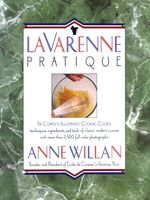Label
All
0
Clear all filters
Dry-salting
Appears in
By Anne Willan
Published 1989
For this method, salt is rubbed into the food to draw out the juices, which produce a brine. Dry salting is most suitable for use in the home kitchen with thin pieces of food that absorb salt quickly, such as sliced vegetables, fish roe, or small fish, especially anchovies and herrings. Larger pieces of food obviously take longer to cure, but the slowness of the process can be advantageous—for example a classic dry-cured ham. Fish takes about a week to dry-salt; ham, bacon and pork take two to three days for every 1 lb/500 g. Signs of poor salting include salt crystals on the food, discoloration, and soft or dry, stringy texture.
Become a Premium Member to access this page
Unlimited, ad-free access to hundreds of the world’s best cookbooks
Over 160,000 recipes with thousands more added every month
Recommended by leading chefs and food writers
Powerful search filters to match your tastes
Create collections and add reviews or private notes to any recipe
Swipe to browse each cookbook from cover-to-cover
Manage your subscription via the My Membership page
Monthly plan
Annual plan
Part of
Advertisement
Related Recipes
-
-
-
-
Related Reference
-
-
-
-
Advertisement
The licensor does not allow printing of this title



